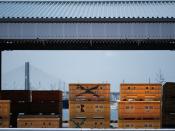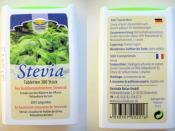SWEETENERS
STEVIA
For hundreds of years, people in Paraguay and Brazil have used a sweet
leaf to sweeten bitter herbal teas including mate. For nearly 20
years, Japanese consumers by the millions have used extracts of the
same plant as a safe, natural, non-caloric sweetener. The plant is
stevia, formally known as Stevia rebaudiana, and today it is under
wholesale attack by the U.S. Food and Drug Administration.
Stevia is a fairly unassuming perennial shrub of the aster family
(Asteraceae), native to the northern regions of South America. It has
now been grown commercially in Brazil, Paraguay, Uruguay, Central
America, the United States, Israel, Thailand and China. The leaves
contain several chemicals called glycosides, which taste sweet, but do
not provide calories. The major glycoside is called stevioside, and is
one of the major sweeteners in use in Japan and Korea. Stevia and its
extracts have captured over 40% of the Japanese market.
Major
multinational food companies like Coca Cola and Beatrice foods,
convinced of its safety, use stevia extracts to sweeten foods for sale
in Japan, Brazil, and other countries where it is approved.
Europeans first learned of stevia when the Spanish Conquistadors of the
Sixteenth Century sent word to Spain that the natives of South America
had used the plant to sweeten herbal tea since "ancient times".
The saga of American interest in stevia began around the turn of the
Twentieth Century when researchers in Brazil started hearing about "a
plant with leaves so sweet that a part of one would sweeten a whole
gourd full of mate." The plant had been described in 1899 by
Dr. M. S. Bertoni. In 1921 the American Trade Commissioner to Paraguay
commented in a letter "Although known to science for thirty years and
used by the Indians for a...



Comprehensive
very well written. good research. good to see the citations.comprehensive.good job
0 out of 0 people found this comment useful.